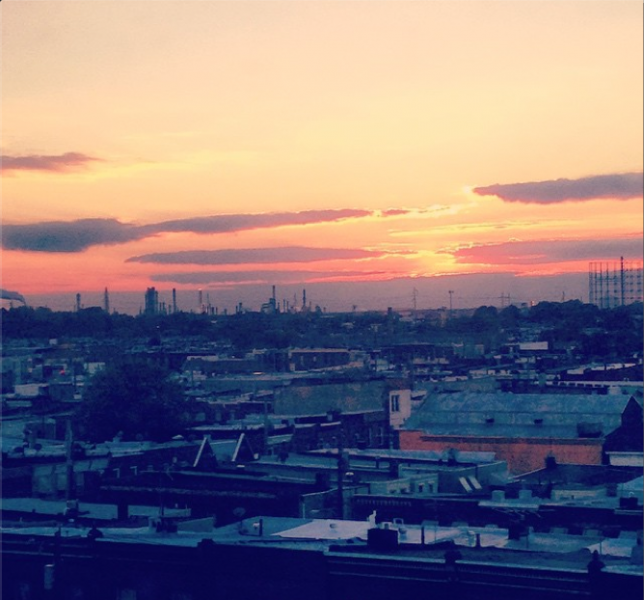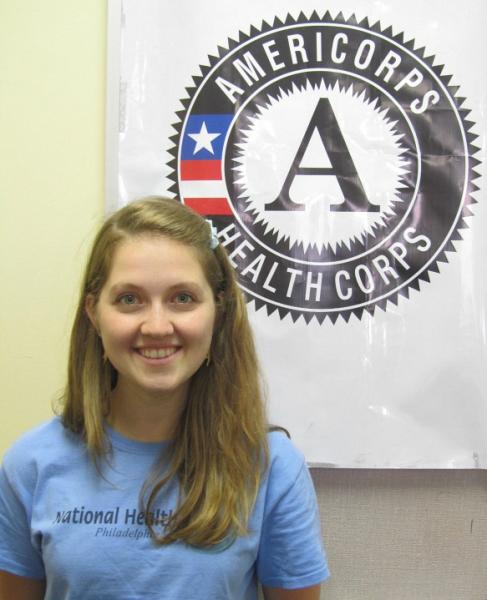If you look out the window of Health Center 2’s Patient Assistance Program office late in the afternoon, you can catch a beautiful view of the sun setting over South Philadelphia. The sky is streaked red, orange, and pink, and smokestacks that emit gray plumes into the air pierce the horizon.

I serve as a Patient Assistance Program Advocate with the Philadelphia Department of Public Health’s Ambulatory Health Services. During my first week of host-site service, I was struck by how many of our patients received medicine for chronic obstructive pulmonary disease (COPD), asthma and other respiratory problems. Multiple times a week, I help our patients who lack prescription coverage obtain inhalers and nasal sprays at no cost to them so that they can breathe more easily.
When I look out of our office window, I think about how the built environment influences health outcomes. A self-proclaimed and Myers-Briggs-verified idealist, I have a lot of faith in policy-based, preventative interventions that aim to reduce social and environmental inequities and eliminate health disparities in turn. Nonetheless, during my first two months with the Philadelphia Health Corps, I’ve served people whose stories illustrate why effective public health interventions must combine the treatment of existing health problems with the prevention of new cases of illness.
Prior to beginning my term of service, I knew that I would be helping patients access medicine through Patient Assistance Programs. I’ve been surprised to realize, though, through conversations with patients, how tangibly my actions as a Patient Assistance Program Advocate have helped reduce the financial burdens and morbidity associated with respiratory diseases. Whether it’s because having an inhaler has prevented someone from suffering an asthma attack and missing work or simply because someone can breathe more comfortably, I’ve learned how access to medicine gives people who are often rendered powerless some control over their health.
Do I think that the smokestacks outside of our window are related to the number of patients that doctors refer to our PAP office for respiratory medicines? Undoubtedly, yes, but I’ve become more aware of the need for both increased access to care and for health-promoting physical spaces in order to improve respiratory health outcomes in South Philly.

This post was written by PHC member Hannah Stone.
Hannah serves at the Philadelphia Department of Public Health - Health Center #2 as a Patient Assistance Program Advocate.
